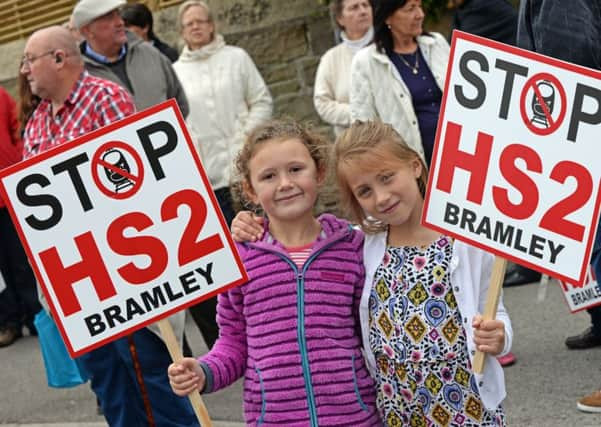YP Comment: Questions over HS2 benefits in Yorkshire


However Sir David, and other transport chiefs, can’t escape the fact that public and political support for HS2 continues to wane, not least because of a growing realisation that this region’s interests might be better served, certainly in the short-term, by a superfast east-west railway linking Hull with Leeds, Manchester and Liverpool.
Yet there are other reasons for this disquiet which Sir David would be advised to acknowledge and accept. The first is the rather abrupt resignation of HS2 chief executive Simon Kirby from his £750,000-a-year salary shortly after he had signed off controversial route changes, particularly those affecting South Yorkshire. His salary, the highest paid to any public servant in Britain, was justified because of his supposed engineering expertise. What now?
Advertisement
Hide AdAdvertisement
Hide AdThe second is the continuing concerns that this £56bn scheme will not be built on time and on budget. Sir David is right to highlight the spin-offs for Yorkshire, but he also needs to remember that all taxpayers, irrespective whether they are rail users or not, are footing the bill.
The third is the manner of HS2’s public engagement. There needs to be far more constructive dialogue with those local communities, particularly those where homes will have to be demolished. Riding roughshod over local homeowners is not a sustainable planning strategy.
Finally, Sir David should stop relying upon promises of shorter journey times to justify his argument. The plain fact of the matter is that Britain’s railways are operating at capacity and a new line is needed so more services can run on existing routes. If he, and colleagues, made this point more convincingly, HS2’s future would not be on the line.
Care quandary
PHILIP HAMMOND will not be short of deputations prior to next month’s Autumn Statement when the Chancellor will set out his own spending plans – the change of Government, and a willingness on Theresa May’s part to slower the pace of deficit reduction following Brexit, means the lobbying will be even more intense in the coming weeks.
Advertisement
Hide AdAdvertisement
Hide AdHowever, it would be remiss of the Chancellor to overlook today’s Health Select Committee letter on the crisis in social care. It is signed by Dr Sarah Wollaston, who is not only a respected former GP, but is one of the few politicians at Westminster to understand the financial intricacies of the NHS. When she upbraids Ministers by saying that their oft-repeated statements about record investment in the NHS are at odds with her experience, and the feedback she has received from the elderly, Mr Hammond must listen.
The reason so many hospitals have a shortage of beds is because they’re being occupied by immobile patients who can’t be discharged because of inadequate care arrangements in their community, a sphere of spending which comes under town hall budgets rather than the auspices of the NHS. With the Care Quality Commission also warning that social care has reached “a tipping point”, there needs to be a far closer correlation between hospital care and community services so the elderly, people who have paid taxes for their entire working lives, are not made to feel an unwelcome burden.
Final innings
NOT ONLY were Herbert Sutcliffe and Sir Leonard Hutton two of the all-time greats of Yorkshire and England cricket, but it was a quirk of geography that they both began their illustrious careers with the famed Pudsey St Lawrence Cricket Club, where a blue plaque has been unveiled to celebrate their prowess.
Theirs was a special relationship – Hutton even received coaching clinics in the garden of his near neighbour Sutcliffe – and it is entirely fitting that Leeds Civic Trust’s expert historians have deemed the feats of both men to be worthy of wider public recognition. There is no doubt that blue plaques do prompt people, young and old alike, to become more inquisitive about notable individuals, especially if the local connection is so tangible. And, as the current England team endure a trial by spin on the Indian sub-continent, it’s another reminder that club cricket is the sport’s lifeblood and the nursery ground for prospective county and international players.